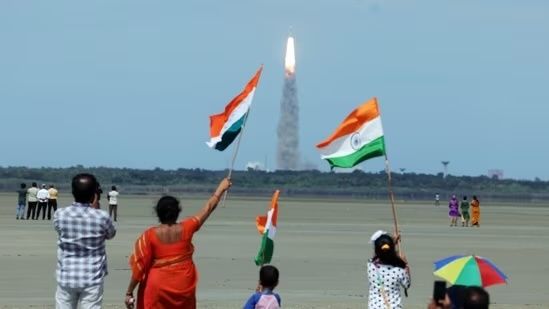20.09.2024
Chandrayaan-4, Venus orbiter mission, Indian space station and next-gen launch vehicle development plan get approval from Narendra Modi government.

Chandrayaan-4, the next phase following Chandrayaan-3's successful lander and rover landing on the Moon, received approval from the Union Cabinet on Wednesday. The Cabinet also cleared the plan for the Venus orbiter mission, the development of an Indian space station, and the next-generation launch vehicle development, Union minister Ashwini Vaishnaw told a press briefing.
What is Chandrayaan-4?
The moon mission, named Chandrayaan-4, aims to develop and demonstrate technologies for returning to Earth after a successful landing on the Moon. It will also collect lunar samples for analysis back on Earth.
1. Indian Space Research Organisation (ISRO) will handle the development and launch of Chandrayaan-4, which is expected to be completed within 36 months.
2. The Chandrayaan-4 mission will cost ₹2,104.06 crore. This budget includes spacecraft development, two LVM3 launches, deep space network support, and special tests.
3. The mission will help India become self-sufficient in technologies for manned missions and lunar sample analysis, with significant involvement from Indian industries and academic institutions.
After Moon and Mars, India to chase Venus
The Venus Orbiter Mission (VOM) will focus on scientific exploration to better understand Venus's atmosphere and geology, generating extensive scientific data by probing its thick atmosphere.
1. The mission aims to orbit Venus with a scientific spacecraft to study the planet's surface, subsurface, atmospheric processes, and the Sun's impact on its atmosphere.
2. Studying Venus is important because it is believed to have once been habitable like Earth. The mission is scheduled to launch in March 2028.
3. ISRO will handle the development and launch of the spacecraft. The total budget for the Venus Orbiter Mission is ₹1,236 crore, out of which ₹824 crore will be spent on the spacecraft.
India to launch its own space station by 2028
The Cabinet also approved the construction of the Bharatiya Antariksh Station (BAS), India's own space station for scientific research. Currently, the only two functioning space stations are the US-led International Space Station and China’s Tiangong.
1. The Cabinet has approved the development of the first module of the Bharatiya Antariksh Station (BAS-1) and missions to validate technologies for building and operating BAS. The Gaganyaan programme will be revised to include these new developments and additional requirements, with a focus on completing eight missions by December 2028.
2. The Gaganyaan programme, initially approved in December 2018, aims for human spaceflight to Low Earth Orbit (LEO) and to support future Indian space exploration. It plans to operationalise Bharatiya Antariksh Station by 2035 and achieve a crewed lunar mission by 2040.
3. The revised Gaganyaan programme, under ISRO, has total enhanced funding of ₹20,193 crore.
The Narendra Modi government also approved the development of a next-generation launch vehicle. Recently, the ISRO completed testing and handed over the Small Satellite Launch Vehicle (SSLV).
1. The Next Generation Launch Vehicle (NGLV) will offer three times the current payload capacity of the LVM3, at 1.5 times the cost. It is designed to carry up to 30 tonnes to Low Earth Orbit (LEO).
2. India’s existing launch vehicles, including PSLV, GSLV, LVM3, and SSLV, can launch satellites up to 10 tonnes to LEO and 4 tonnes to Geo-Synchronous Transfer Orbit (GTO). The NGLV will build on this capability.
3. The total approved budget for the NGLV project is Rs. 8240 crore. It will have three development flights with a target of 8 years for the completion of the development phase.
Quelle: Hindustan Times
